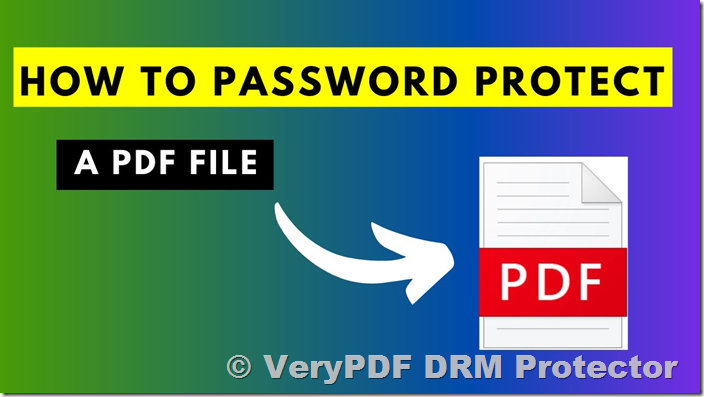Introduction: Why Protect PDF Files?
The protection of sensitive documents is of utmost importance, especially when it comes to PDF files. Whether you’re sharing confidential reports, proprietary information, or intellectual property, safeguarding PDFs from unauthorized access and distribution is crucial. PDFs are widely used across industries, and they often contain sensitive information such as financial reports, legal documents, and personal data. Without proper protection, these files are vulnerable to unauthorized access, copying, and distribution. In this article, we explore different methods to protect PDF files, with a special focus on the use of Digital Rights Management (DRM) software as the most effective solution.
Methods to Protect PDFs
1. Protect PDF with Passwords
Password protection is one of the most basic and common ways to secure PDF documents. By encrypting the file with a password, only users with the correct credentials can access the file. However, this method has some limitations. While passwords can prevent unauthorized access, they do not prevent users from sharing passwords, and they don’t stop screen capture, printing, or copying the content. Thus, password protection is not a comprehensive solution for PDF security.
2. Protect PDF with Watermarks
Watermarking is another technique for deterring unauthorized sharing or distribution of PDF documents. Visible watermarks can include copyright symbols or confidentiality labels, while invisible watermarks embed unique identifiers into the document, helping to track the file if it’s leaked. Watermarking is effective in marking ownership of digital content, but it doesn’t prevent unauthorized access or viewing of the file itself.
3. Protect PDF with Encryption
Encryption is a more robust security measure, where the PDF file is encoded using encryption algorithms like AES (Advanced Encryption Standard). Encryption ensures that even if a file is intercepted, it cannot be accessed without the proper decryption key. However, encryption alone may not prevent unauthorized access if the decryption key is shared or compromised. Encryption provides an extra layer of security but does not offer granular control over document distribution and usage.
Why Choose DRM Software for Protecting PDFs?
Digital Rights Management (DRM) software offers comprehensive and advanced protection for PDF files by controlling access, usage rights, and distribution. Unlike basic password protection or watermarking, DRM solutions provide a more granular approach to securing PDFs. DRM not only encrypts documents but also allows content owners to enforce policies such as limiting views, printing, copying, and sharing. It’s a more complete and secure way to safeguard intellectual property, particularly for businesses and content creators who want to monetize or protect their digital content.
Key Benefits of DRM Software
- Granular Control: DRM allows content owners to define specific access and usage rights for individual users or groups, ensuring that sensitive information remains secure.
- Tracking and Reporting: DRM solutions offer insights into who accessed a file, when it was accessed, and any unauthorized activities, helping businesses maintain compliance.
- Flexibility: DRM software is adaptable to different types of content and industries, providing tailored protection solutions.
- Compliance: DRM ensures that content protection meets regulatory requirements for industries like healthcare, finance, and legal sectors.
How to Protect Your PDFs Using VeryPDF DRM Protector
One of the best tools for securing your PDF files is VeryPDF DRM Protector. Unlike third-party software such as Adobe Acrobat, VeryPDF offers a robust solution that allows you to protect your PDF files effectively. You can try this tool for free online at https://drm.verypdf.com/online/.
Here’s how to protect your PDF using VeryPDF DRM Protector:
- Upload your PDF file to https://drm.verypdf.com/online/.
- Choose the “Make Secure PDF” option.
- Set the appropriate protection options (such as limiting printing, copying, or sharing).
- Download your protected PDF file, now secured with DRM technology.
Conclusion
In today’s digital world, protecting PDF files is crucial to maintain confidentiality, safeguard intellectual property, and ensure compliance with regulatory requirements. While methods like password protection, watermarking, and encryption provide basic security, DRM software offers the most comprehensive solution. With DRM, content owners can control access, monitor usage, and prevent unauthorized distribution. VeryPDF DRM Protector provides an excellent, user-friendly way to protect your PDFs, and it can be tried for free online at https://drm.verypdf.com/online/. Give it a try and experience the full range of features that DRM protection can offer!

